A chef turns to Instagram to survive, and his ready-to-eat Korean seafood takes off
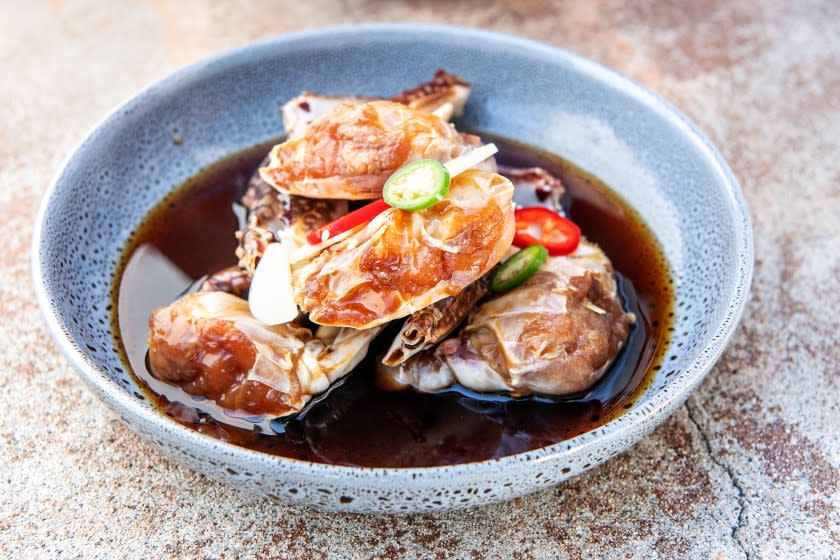
When the pandemic hit, throwing the restaurant industry into survival mode, husband and wife Ryan Lee and Lucy Row were two of countless Angelenos who hustled to adjust.
Lee was working as the chef of an izakaya in Koreatown — very much indoors, in the basement of a commercial building. Row owned and operated Cafe Lucy, a casual breakfast and lunch spot in Santa Monica that catered to the weekday office-worker crowd. Cafe Lucy closed in March 2020 and Lee, who had been working in Japanese restaurants since 2005, quit his job in June.
As they cast about for new ways to make money, they struck upon an unusual business idea — a delivery service for gourmet, ready-to-eat Korean seafood, prepared in Café Lucy’s kitchen. They called it Sonsoo Kitchen— “Sonsoo” meaning “hand-crafted” in Korean — and hung out their shingle in September. The times being what they were, that shingle was the Instagram handle @sonsoo_kitchen.
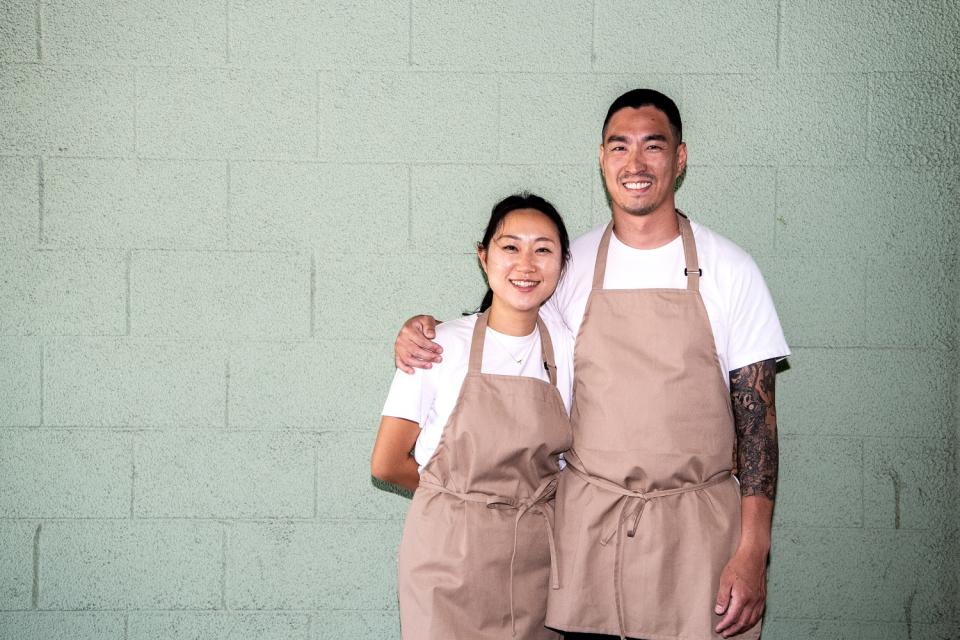
Lee was inspired by businesses he saw on the app in the early months of lockdown selling meal kits and photogenic dishes directly to homebound customers. For many new entrepreneurs, this business model has been a lifeline, allowing them to operate under lockdown conditions while circumventing delivery apps.
Lee misses the in-person nature of working in a restaurant, but he also appreciates that Instagram has given him wider reach: “Customers can’t come find me at my restaurant, but I like that I can meet customers in different geographic areas. They can get my food and share it on Instagram with their friends and followers, and I can meet even more new people.”
Sonsoo is one of many Korean American-owned Southern California food providers that have found and served customers through Instagram. Flour Premium Doughnuts (@flour_donut), which started its operation in 2018, well before COVID-19, developed a devoted fan base with tantalizing images of doughnuts — classics like glazed and cinnamon sugar, as well as specialty offerings like matcha brûlée and the popular sweet and savory salad doughnut, a sandwich of ham, apple, cabbage and cucumber on a doughnut bun. Orders are taken through text message, with weekly deliveries to multiple pick-up locations in Los Angeles and Orange counties.
Last April, Los Angeles-based Calic Bread (@Calicbread) brought a viral Korean street-food phenomenon to the U.S. Selling nothing but its pull-apart garlic cream cheese bread, Calic Bread has gained a robust following and now offers bread and baking kits for pick-up in Koreatown, as well as baking kits for national delivery through Goldbelly.
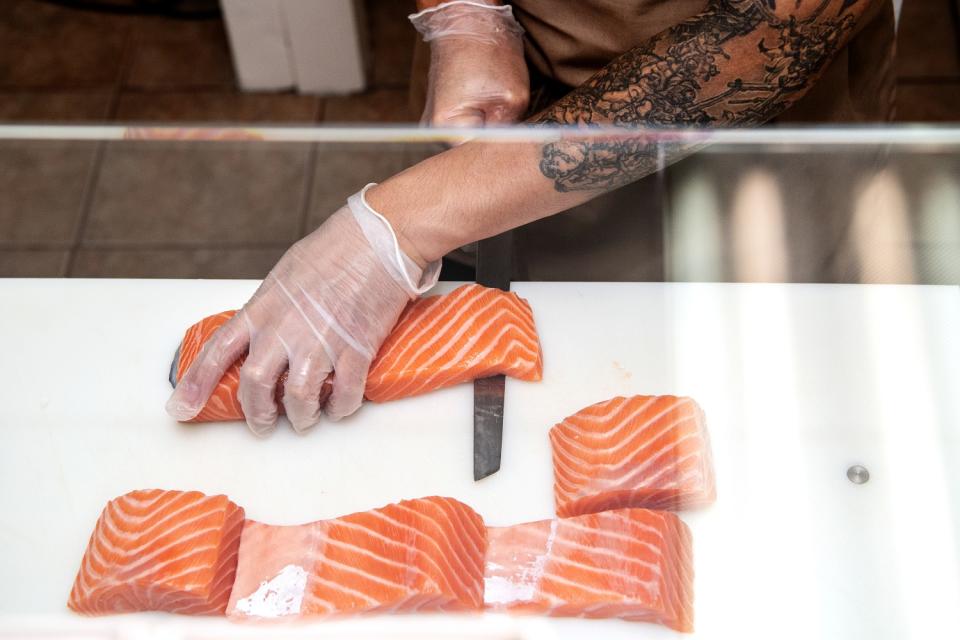
Lee wanted to start a business that would use his expertise with Japanese food — particularly sushi and sashimi — and appeal to Los Angeles’ large, hungry Korean customer base, taking advantage of the relationships he’d built as a chef in Koreatown. With his experience and a desire to make and serve food that was healthful as well as appetizing, he decided to focus on seafood. He spent a month perfecting Sonsoo’s signature marinade and then prepared his first offerings: Korean-style marinated salmon sashimi (yeoneojang) and salmon roe (yeoneoal).
Lee and Row distributed samples and before long, they started receiving regular orders. Lee went back to the kitchen and expanded the menu, adding marinated shrimp, then crab, then abalone, then spicy crab. Word-of-mouth was strong — I learned about Sonsoo from my mother, who first saw the salmon and roe in an Instagram post by one of Lee’s friends, a woman who once dated my cousin — and by November, business was booming.
Sonsoo has never advertised, and if you look for it on Yelp you'll come up empty. Lee and Row are working on a website but for now, it’s run through Instagram. Orders are taken by phone, direct message and the Korean mobile messaging app KakaoTalk.
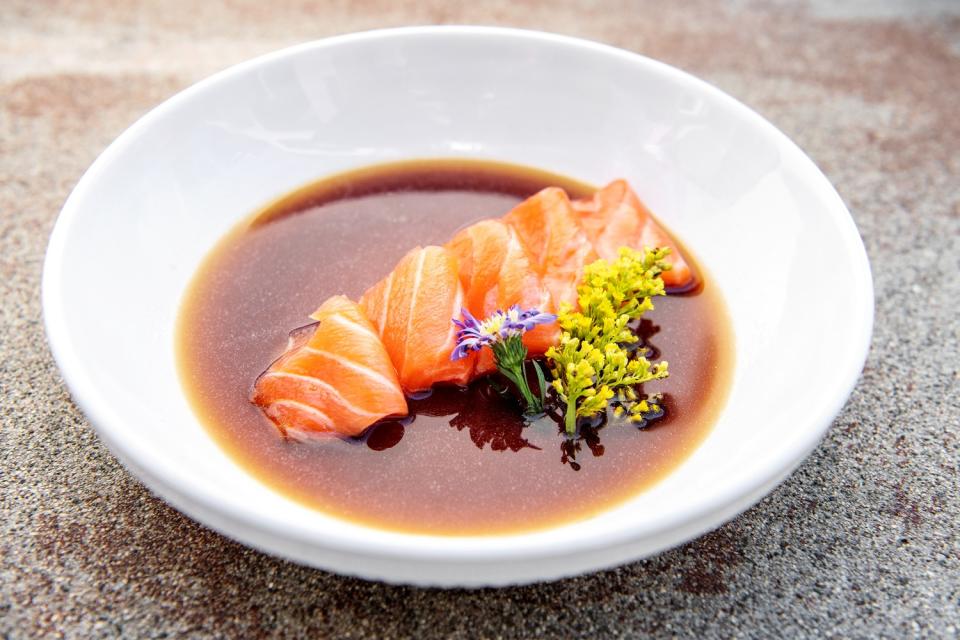
When he gets the week’s orders, Lee buys what he needs and gets to work in the Cafe Lucy kitchen (customer orders range from about 100 to 180 per week). The couple delivers the food themselves — they’ll come to your doorstep if you make a large enough order, but they also do weekly drops in a few rotating locations between Los Angeles and Orange County.
It’s a little more complicated than searching Grubhub for Korean food, but in a year when I ate out zero times and many of my favorite Korean restaurants closed permanently, Sonsoo Kitchen has been a tremendous blessing. A dish of gelatinous raw crab won’t babysit my child or bring back Jun Won (my favorite restaurant in Koreatown, closed since last summer), but it’s a luxurious pleasure that can lift an entire day. The prices range from $18 for a jar of roe to $25 for generous portions of blue crab and abalone.
Lee gets his seafood from the wholesale fish markets downtown, shopping at 6 in the morning when he can have his pick of the inventory. Most of Sonsoo’s menu is raw seafood — lightly preserved in a soy sauce, or ganjang, marinade — so the quality of the ingredients is both essential and evident.
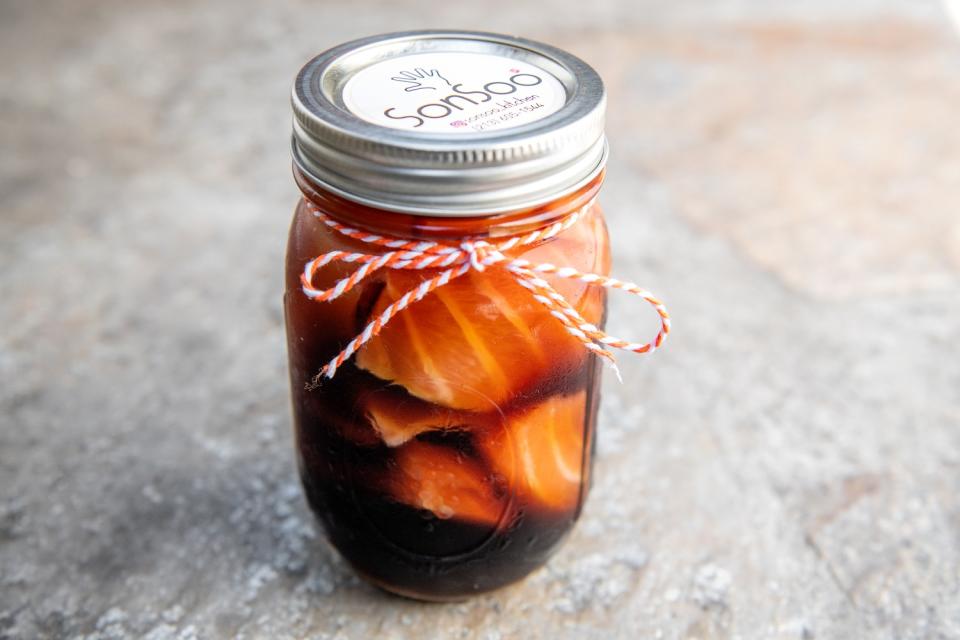
The sashimi-grade Scottish salmon is buttery and lush. Lee cures it in kombu before brining (an old sushi chef trick that extracts moisture from the fish, thereby intensifying the flavor), and with a little rice — or better yet, a spoonful of plump bursting salmon roe, prepared with the same marinade — it makes a beautifully Koreanized sushi meal. The saewoo jang, or marinated shrimp, is like a Korean aguachile, the raw shrimp meaty and sweet with a snappy, bouncy firmness.
Sonsoo’s one cooked item is the jeonbokjang, a labor-intensive dish of steamed abalone sliced and served in its shell. Lee uses the whole abalone, including the viscera that many chefs throw away. For Koreans, the guts are part of the delicacy, soft with a gentle funk, providing a nice counterpart to the tenderly muscular, almost crunchy texture of the rest of the abalone.
The abalone too is brined in Lee’s soy sauce marinade. This marinade is full of flavor (I don’t know everything he puts in there but it swims with slivers of garlic, jalapeño and red chili pepper) but is surprisingly mellow, never overwhelming the seafood.
Everything on Sonsoo’s menu uses this marinade except for the yangnyeom gejang, or spicy raw crab, which is made with a stronger sauce, bright red with chili pepper. The blue crabs come cut into segments dense with gooey raw ambrosial meat, which you can pull out with chopsticks or bite into and suck right out of the shell.
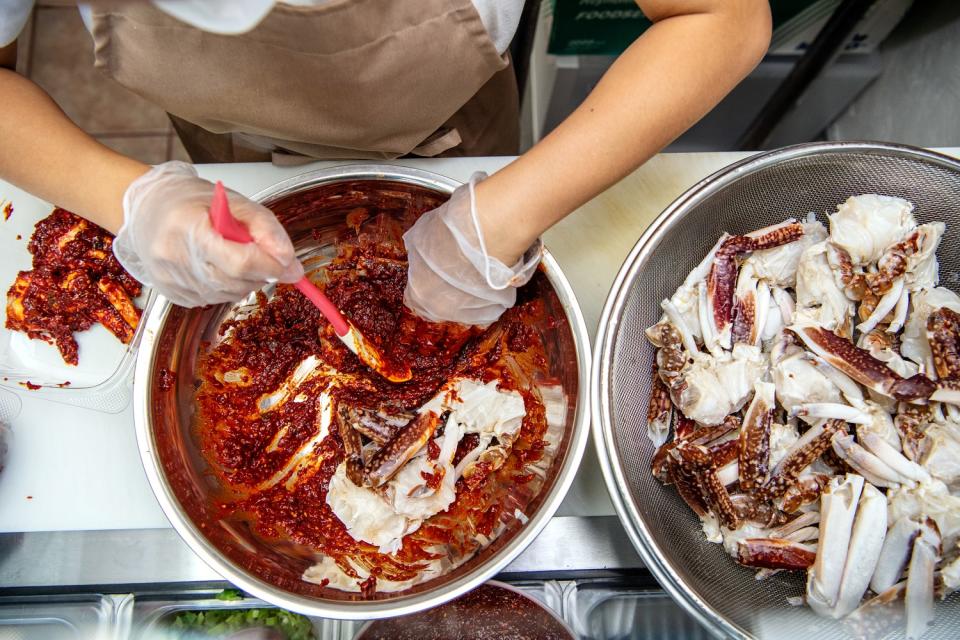
All Sonsoo offerings are meant to be eaten cold. Add rice — which has the added benefit of soaking up that marinade — and you have a full decadent seafood meal, ready right out of the fridge. If you’re feeling ambitious, throw in some seaweed or vegetables or whatever else suits your fancy — you can find inspiration in Sonsoo’s Instagram posts.
Lee and Row are both fully vaccinated for COVID-19. The pandemic seems as if it is finally in retreat and restaurants are starting to reopen, albeit on a limited basis. But it’s been a terribly hard year for the industry, as Lee knows. “A lot of small business owners, ourselves included, have had a hard time since the pandemic began,” he says. “But I think we were able to grab a new opportunity amid the crisis.”
Next to our losses, our gains are rare and precious, and I count Sonsoo among them: a product of resilience and reinvention that owes its existence to the challenges of this last year. Cafe Lucy may never reopen — even with restrictions lifted, the Santa Monica office crowd is unlikely to come back in full force anytime soon — but Lee and Row are optimistic about the future. They might open another restaurant down the line, but for now, they will keep feeding customers looking to dine well at home.
This story originally appeared in Los Angeles Times.

